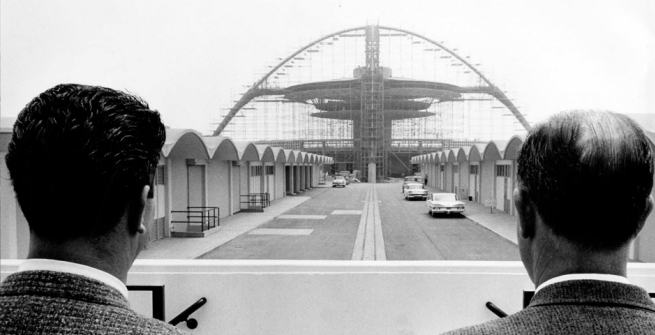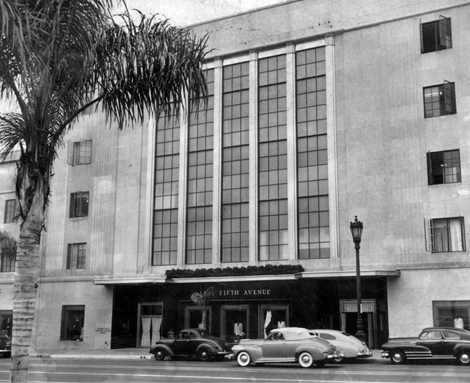A quiet, gentleman, he found his ‘voice’ in his designs. When others attempted to silence him with racism, he ‘spoke’ as others could not—for himself, and for his community. He also found his voice in community participation. Appointed to the first City Planning Commission of Los Angeles, in 1920, he understood the importance of civic responsibility and representation. From then on he would serve on city and county boards in the arts and planning, allowing him to again ‘speak’ volumes whether selecting artwork for public buildings or laying the groundwork for public spaces. —From the introduction of Paul R. Williams Classic Hollywood Style by Karen E. Hudson
Paul Revere Williams was born in downtown Los Angeles on February 18, 1894, at 824 Santee Street, and was orphaned by the age of four when his parents died of consumption two years apart. He was raised by a foster mother who dedicated herself to his education and instilled in young Paul that he could achieve anything he wanted. He was the only African-American student at Sentous Avenue Elementary School, which was located where L.A. Live Way is today. When he was attending Polytechnic High School he discovered his passion for architecture, despite being counseled against choosing architecture as a career, because of his race. Paul would go on to study at Los Angeles School of Art and Design, New York Beaux-Arts Institute of Design Atelier, the Los Angeles Branch, and complete his architecture degree at the University of Southern California in 1921.
Paul R. Williams was the first African-American architect west of the Mississippi, winning architectural competitions, and owning his own practice by the age of 25. His talent and clientele took off in the 1920s, setting the stage for his highly sought after design skills. Williams would go on to create some of the most iconic and timeless structures that would ever grace Los Angeles and the Southland with the Williams touch and his California flair.
Early in his career, Williams developed the skill of writing upside down while standing across from his clients when he noticed that some of them felt uncomfortable sitting next to a Black man. Williams described this skill “as an artistic sleight of hand. It was about making a dazzling first impression so that people would think twice about judging him by the color of his skin.”
It is ironic that one of the most celebrated architects of Los Angeles, who designed homes for some of the most famous people, would not be able to live in most of the neighborhoods they were placed, because of the racist land covenants that held sway, and did not begin to relent until the Supreme Court rulings in 1948 and 1953.
These images are just a few of the highlights we have in our collection that represent Paul Revere Williams’ lasting influence and artistry across the landscape of Los Angeles. A contribution that has affected our residents rich and poor alike, creating places that cause us to dream and strive in spite of what challenges we may face. Williams designed around 3,000 projects over his career, was the first African-American member of the American Institute of Architects (AIA) in 1921, and the first African-American to be inducted into AIA College of Fellows in 1957. Paul R. Williams died on January 23, 1980, and is buried at Inglewood Park Cemetery.
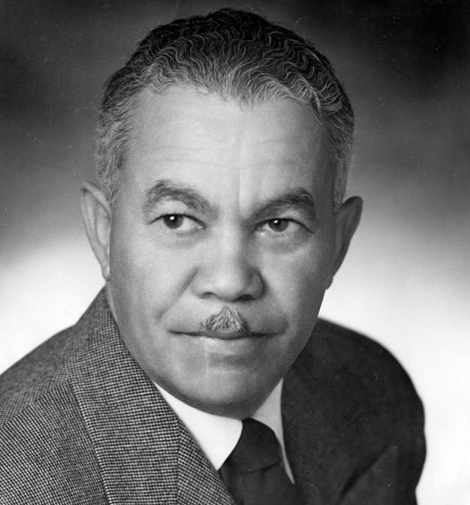
Photograph caption dated November 17, 1951 reads, "Paul R. Williams, who with Milton J. Brock and Leonard J. Chudacoff, will be honored for his work in the promotion of good human relations, by the Building and Allied Trades Committee of the National Conference of Christians and Jews at a dinner December 11 at the Beverly Hills Hotel. This was announced yesterday by Ernest J. Loebbecke, vice president and treasurer of the Title Insurance and Trust Company, chairman of the committee." Herald Examiner Collection
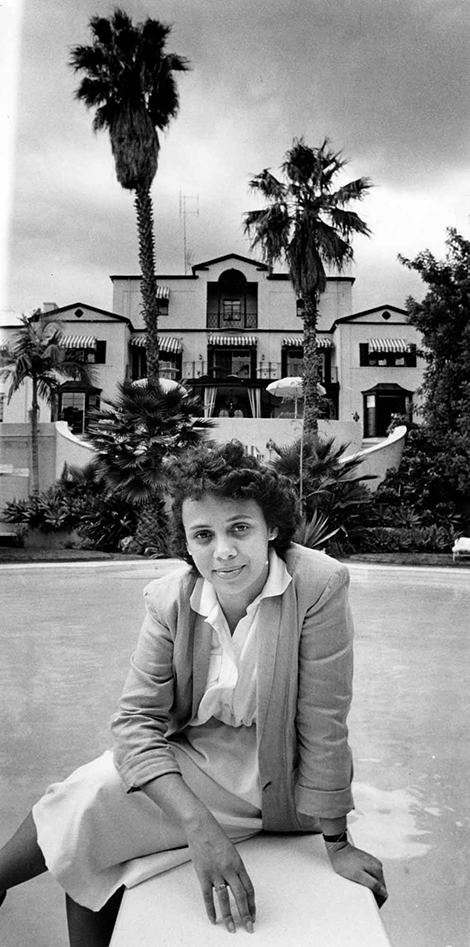
Sunset Plaza Apartments (Designed 1935). Karen E. Hudson, granddaughter of Paul Revere Williams sits on a diving board with her grandfather’s magnificent creation rising behind her. Designed for photographer Frank S. Hoover as an investment property, the luxury Sunset Plaza Apartments cost over $350,000 to build and opened in 1936. Paul R. Williams built this multi-level 18 unit Georgian Revival luxury apartment with interiors by Bullocks, and all the modern conveniences of the time, including an inventive forced air heating and cooling system. The Sunset Plaza Apartments rose like the Acropolis of a reimagined Athens over the Sunset Strip. In 1980 Sunset Plaza Apartments were declared a Historic-Cultural Monument, only to be demolished in 1987 to build a private residence called Casa Bella.
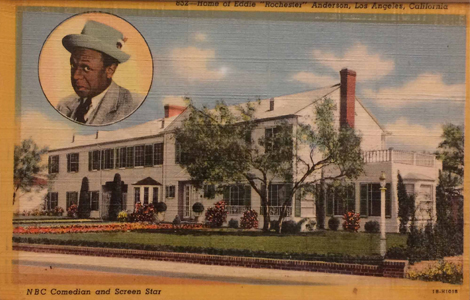
Postcard of “Rochester Mansion,” Eddie Anderson’s home. Edmund Lincoln Anderson was the first African-American to have a regular role on a nationally syndicated radio show: The Jack Benny Program on NBC. Eddie wanted a home designed by Paul R. Williams, but because of restrictive and racist land covenants, he was limited on where he could build his home. Eddie chose a lot in Exposition Park, where he had his Rochester Mansion built in 1937.
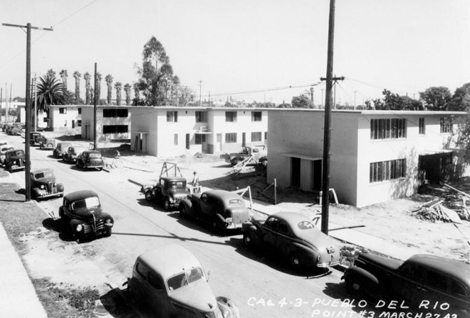
Pueblo Del Rio (Chief architect 1940). Pueblo Del Rio Housing project is located at 1801 E. 53rd St, Los Angeles, CA 90058, and was designed by architects Richard Neutra and Paul Revere Williams. The design was inspired by the “garden city” concept, which called for the use of greenbelts and parks to be interspersed with clusters of housing and public buildings. Originally intended for factory workers and veterans, the property was an exercise in form and functionality. Spread over 17.5 acres with 57 two-story apartment buildings, Pueblo del Rio is one of the oldest and largest housing projects in Los Angeles. By the 1950s with the addition of more apartments on an additional 16.6 acres, Pueblo del Rio had become strictly a low-income housing project.
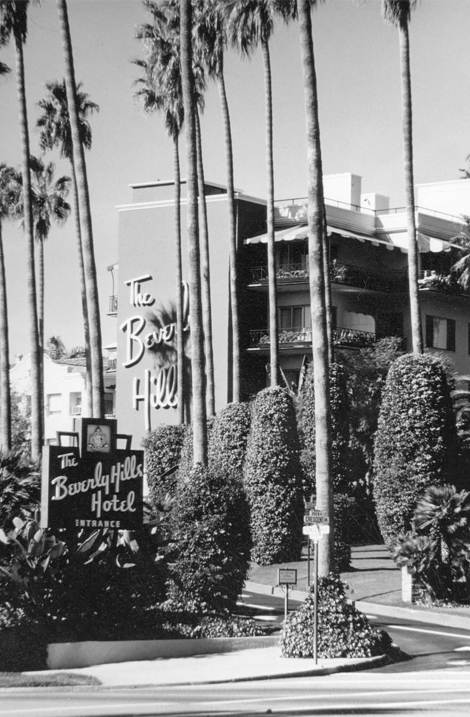
Beverly Hills Hotel (Renovations and additions 1941-1949). The sign for the Beverly Hills hotel was part of the aesthetic that Williams designed, and has become its most iconic trademark. Photo credit: Roy Hankey, [ca. 1980]
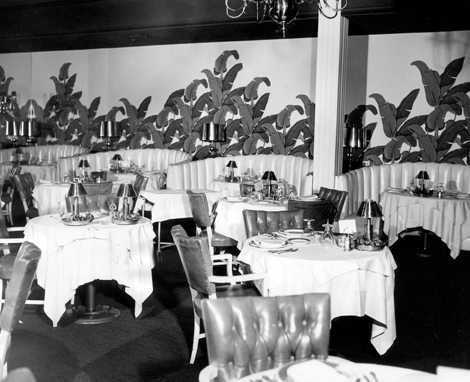
Beverly Hills Hotel (renovations and additions 1941-1949). The Banana leaf motif is one of the many design elements that Williams created in collaboration with John Luccareni and Harriet Shellenberger while redesigning the hotel interiors.
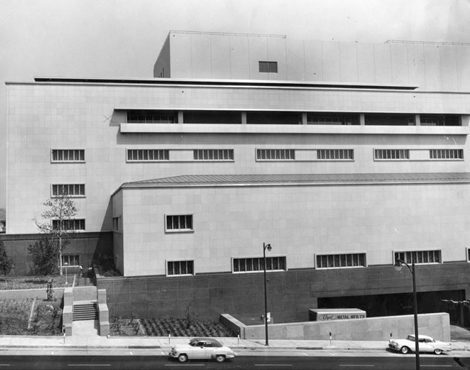
Los Angeles County Courthouse (Contract for in collaboration 1951). Designed by a collaboration of architects, including Paul R. Williams, called the Associate Architects, construction began in 1954 and the building opened in 1959. Photo credit: Bill Walker, Herald Examiner Collection
Saks Fifth Avenue, Beverly Hills (original design 1937). Designed by architects, John and Donald Parkinson and Paul R. Williams. The Saks-Fifth Avenue at 9600 Wilshire Boulevard opened its $2,000,000 complete line of men's attire division. Company officials said the new men's store is one of the most modern on the coast. Photograph dated May 19, 1947.

Perino’s end of an Era 1983. View of Perino’s in 1983 at the end of its celebrated and storied career. Perino’s closed three years later and was torn down in 2005. Photo credit: James Ruebsamen, Herald Examiner Collection [1983]
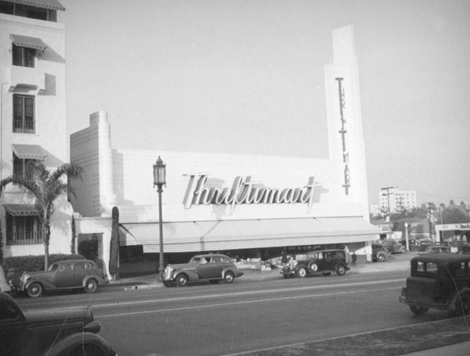
Perino’s (Designed 1954). 1937 view of the Thriftimart, where Perino’s would move to in the 1950s, and which Paul R. Williams would design and remodel twice. Photo credit: Herman J Schultheis Collection, [1937]
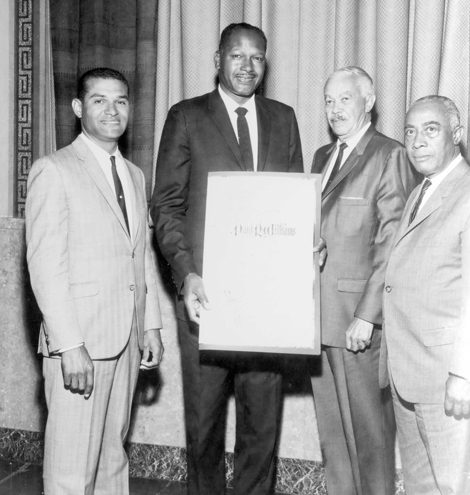
Paul R. Williams 1965. Photograph from the Rolland J. Curtis Collection showing Paul R. Williams receiving a resolution from city Councilmen Tom Bradley, Billy Mills, Gilbert Lindsay in 1965.
Further Reading
Paul R. Williams: Classic Hollywood Style
The Will and the Way: Paul R. Williams, Architect
Paul R. Williams, Architect: A Legacy of Style

